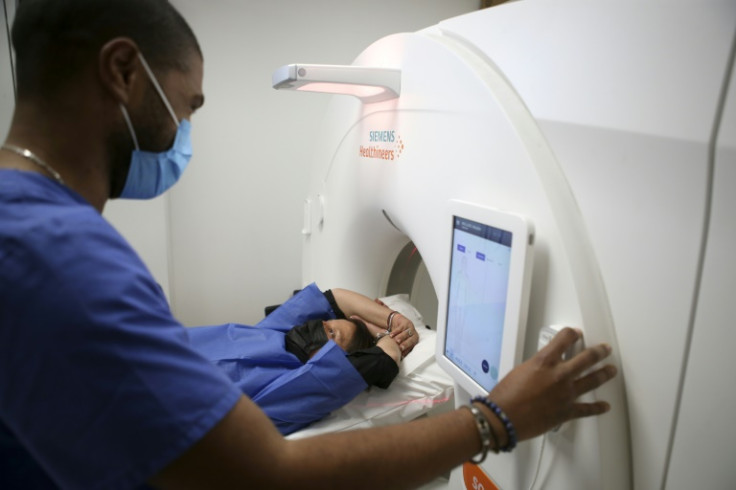What's Holding Back The Early Detection Health Care Market?
More than 10 million people globally will die of cancer this year, nearly 7% of them in the United States. As a cancer researcher, that's a difficult number for me to imagine, especially when both our knowledge of cancer as a disease and the capability of cancer screenings have greatly improved over the past four decades.
In the U.S. alone, mammograms have prevented more than half a million breast cancer deaths since 1989. To put it in perspective, that's roughly the population of Tucson, Arizona or Albuquerque, New Mexico. While millions are being saved by early detection, millions still are impacted by medicine's current inability to successfully, consistently and accurately provide early diagnoses for cancer.
Short of developing a vaccine to prevent cancer, the biggest impact on cancer worldwide would be the development of a screening that can detect cancer at its earliest stages. Most cancers today can be cured with conventional treatments like surgery, radiation and drugs when discovered at stage one or earlier. Even for pancreatic cancer, one of the worst and most aggressive cancers, the survival rate is almost 10 times better when diagnosed at stage one versus stage four.
Keeping in mind that 70% of cancer deaths occur in low- and middle-income countries, an ideal early cancer detection system would be sensitive enough to discover any cancer at least 90% of the time and have a very low number of false positives so that unnecessary treatments and anxiousness are avoided. It also should require only a very small amount of blood so that it is convenient and should be inexpensive so that it can be used often and by anyone.
Meeting these goals could effectively eliminate cancer as a major cause of death worldwide.
Why Have Efforts in Early Detection Stalled?
For many years, the cancer diagnostic effort was focused on discovering protein biomarkers in the blood. However, markers that were abundant at late stages of cancer were undetectable or unreliable at early stages. Hundreds of millions of research dollars and effort were expended to no avail.
The idea of a simple blood test for detecting any type of cancer was reignited with the discovery of DNA shed from tumors in circulation in the blood. Given the advances in DNA sequencing, it was expected that various types of DNA analysis would yield a multi-cancer screening system for the early detection of cancer.
While these approaches were, and are, useful in detecting cancer at late stages or recurrent cancer, they miss most early-stage cancers. There simply was not enough DNA shed, for example by stage one breast cancer, in the blood to detect the cancer. What's more, these systems generally required several milliliters of blood and were expensive. They, in fact, only met one of the four requirements of an ideal early cancer screening: they had very low false positive rates.
Small Leaps Forward Are Happening in Early Detection, but Is It Enough To Make a Difference?
Companies like Grail, Exact Sciences, Guardant and others continue to improve upon DNA-based approaches to multi-cancer tests. Given the limitations to date of currently circulating DNA diagnostics, other methods are also being explored. For example, the detection of circulating tumor cells or the so-called exosomes they release shows some promise. A recent preliminary study reported very good results based on measuring the contents of a unique type of senescent cells.
At Calviri, we are developing a diagnostic based on measuring antibodies generated to tumor neoantigens. If successful, this diagnostic has the advantage of requiring only a very small amount of blood and being inexpensive.
Given the huge impact of the successful development of a multi-cancer screening, there is much effort and enthusiasm that a path for the development of one or more diagnostics will be found.
What Will It Take To Usher In the Era of Early Detection?
Breakthroughs are easier to achieve, and more quickly, when there are more researchers in the field to conduct research. But success isn't just about the number of people in the field; it's about what they're doing with their expertise. Ushering in an era of early detection requires results. As an industry, and even as individual companies, early detection will succeed when and if we can show strong results for stage one and stage two cancers in an intended-use population.
What that means is that a clinical trial of the diagnostic will need to include people intended to use the diagnostic, or more simply put, people who need to be screened for early detection of cancer. For example, an intended-use study may enroll 50,000 people aged 60 to 75 who will receive the real diagnostic and others who will receive a mock diagnostic. From there, researchers will determine how many early-stage cancers were detected in each group to better understand whether the diagnostic is doing its job and detecting cancers earlier than other means.
As with every treatment, diagnostic and methodology in health care, it takes time, expertise, funding and significant amounts of data to achieve success and go to market. Right now, the early detection health care market is moving forward, albeit slowly, and making major contributions to health and longevity along the way.
Although the market has not yet achieved the speed and leverage of other research fields, like Alzheimer's Disease, new and incremental breakthroughs are occurring with regularity. It's only a matter of time — and with more funding and expertise, quite a bit less time — before researchers make major overarching breakthroughs and send them to the market where they can do their intended job: help patients and the doctors who treat them.
(Stephen Albert Johnston is the CEO of Calviri.)

© Copyright IBTimes 2024. All rights reserved.





















